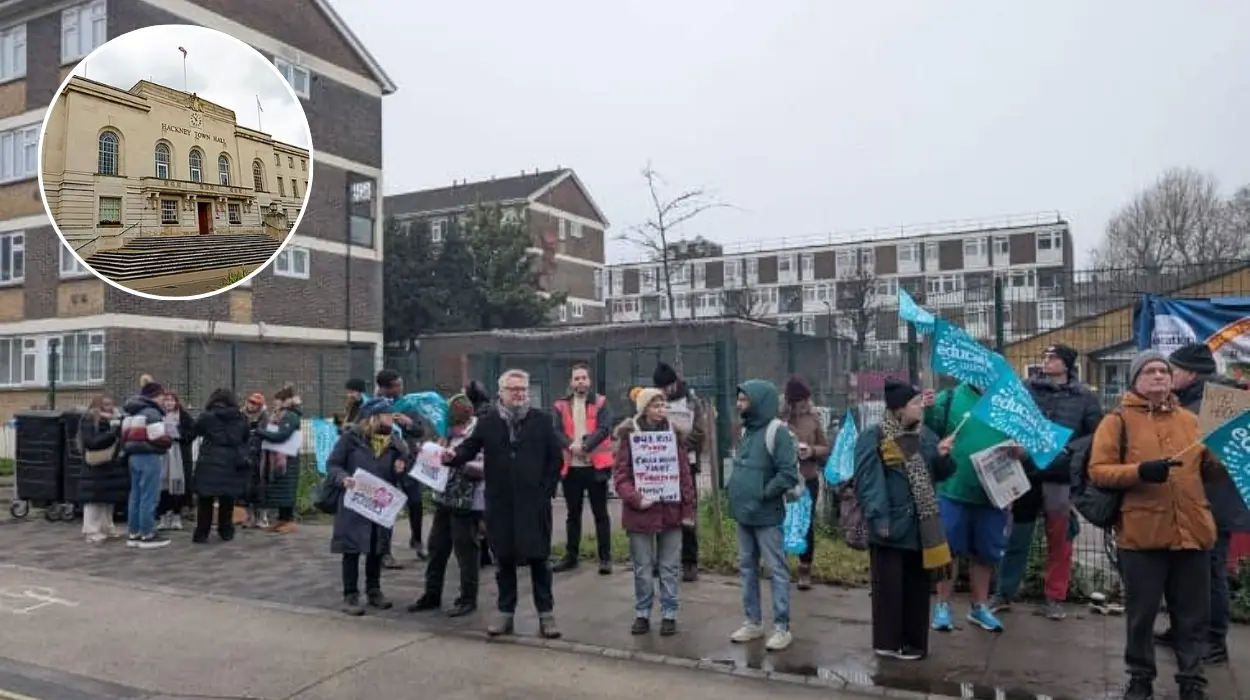Key Points:
- Hackney Labour council voted to close four primary schools, including St Mary’s and St Dominic’s, at the end of the school year.
- The closures are part of austerity measures, leading to strong opposition from teachers, parents, and union members.
- NEU union member Carly condemned the closures, calling them a “grave injustice” to students, staff, and the community.
- The closures are said to be driven by falling birth rates and government funding cuts, but critics argue there are alternatives.
- Hackney council’s education cabinet member, Anntoinette Bramble, defended the decision, calling it a “difficult” one.
Hackney Council‘s decision to close four primary schools sparks protests from teachers, parents, and unions, citing funding cuts and falling enrolments.
Why did Hackney Labour Council decide to close schools?
Hackney’s Labour council has approved the closure of four primary schools in the borough as part of its austerity measures.
In a controversial move, councillors voted to shut down St Mary’s primary school and St Dominic’s primary school, both of which will close at the end of the academic year. The council has also decided to merge Oldhill Community School and Sir Thomas Abney primary school with other local institutions.
This decision follows a lengthy campaign and protests from teachers and parents. The closures are reportedly a result of falling student enrolment numbers, linked to the housing and cost of living crises pushing working-class families out of the borough.
What are the objections to the school closures?
Opponents argue that these closures represent a grave injustice against the community, staff, and students.
Carly, a teacher at St Dominic’s and an NEU union member, labelled the closures as “a grave injustice.” She criticised Hackney Labour for making “hasty decisions with no long-term planning,” which she believes will lead to the eventual eradication of community schools in the borough. Carly expressed concern that such closures would dismantle the supportive networks built by parents and educators.
Teachers, parents, and union members have voiced their outrage at the decision. A protest was held at the council cabinet meeting where the closures were finalised, with around 20 NEU members and parents present. Carly explained, “We ended up shouting at the councillors and walking out,” adding that the protesters had shouted, “Shame on you,” “Liars, resign,” and “We will never vote for you again.”
Why are these closures happening?
The closures are being attributed to falling birth rates and a reduction in school enrolments.
Hackney Labour’s rationale behind the school closures is a decrease in student numbers, as fewer families are able to live in inner London due to rising housing costs. This has led to a decline in government funding, which is allocated based on student enrolments. As a result, schools in Hackney are facing financial difficulties, prompting the council to make cuts.
However, Carly and other critics argue that the council has other options. She claimed that the council ignored alternative proposals, such as school mergers without compulsory redundancies. Despite the backlash, Hackney’s education cabinet member, Anntoinette Bramble, defended the decision, saying, “Sometimes we are asked to make difficult decisions.”
Are there other councils considering similar actions?
Hackney’s closures are part of a wider trend in London, with other boroughs such as Lambeth and Islington also proposing school closures.
Hackney’s decision to close schools is not an isolated incident. Councils across London, including Lambeth and Islington, are also considering or implementing similar measures in response to declining student numbers and budget pressures.
Critics argue that the closures are part of a wider trend where councils prioritise luxury flat developments over affordable housing, which in turn exacerbates the housing and cost-of-living crises, pushing families further away from central areas.
What is the future of education in Hackney?
Carly and other opponents believe the closures will have long-term negative impacts on education in Hackney.
The NEU union has called for smaller class sizes and a shift in priorities to support working-class families. Instead of closures, they argue that Hackney Labour could campaign for more government funding and work in partnership with teachers, parents, and community groups to prevent further school closures.
Carly has stated that the key lesson from the campaign is the importance of striking fast and building a strong community response. She urged people to “not make it easy for them” and to stand against these cuts, saying, “We do not manage decline.”
The fight against school closures in Hackney may not be over, and it’s clear that tensions between the Labour council and the community are likely to escalate further.
Related News:
- Hackney Council approves £2m sale of three buildings in Dalston amid public fear
- Hackney Council rejects plan for late-night venue on former Cargo site over crime concerns
- Hackney Greens challenge Town Hall over delays in tougher landlord rules
- Scaffolding Collapses in High Winds on Hackney’s Stoke Newington Church Street, Trapping Driver
